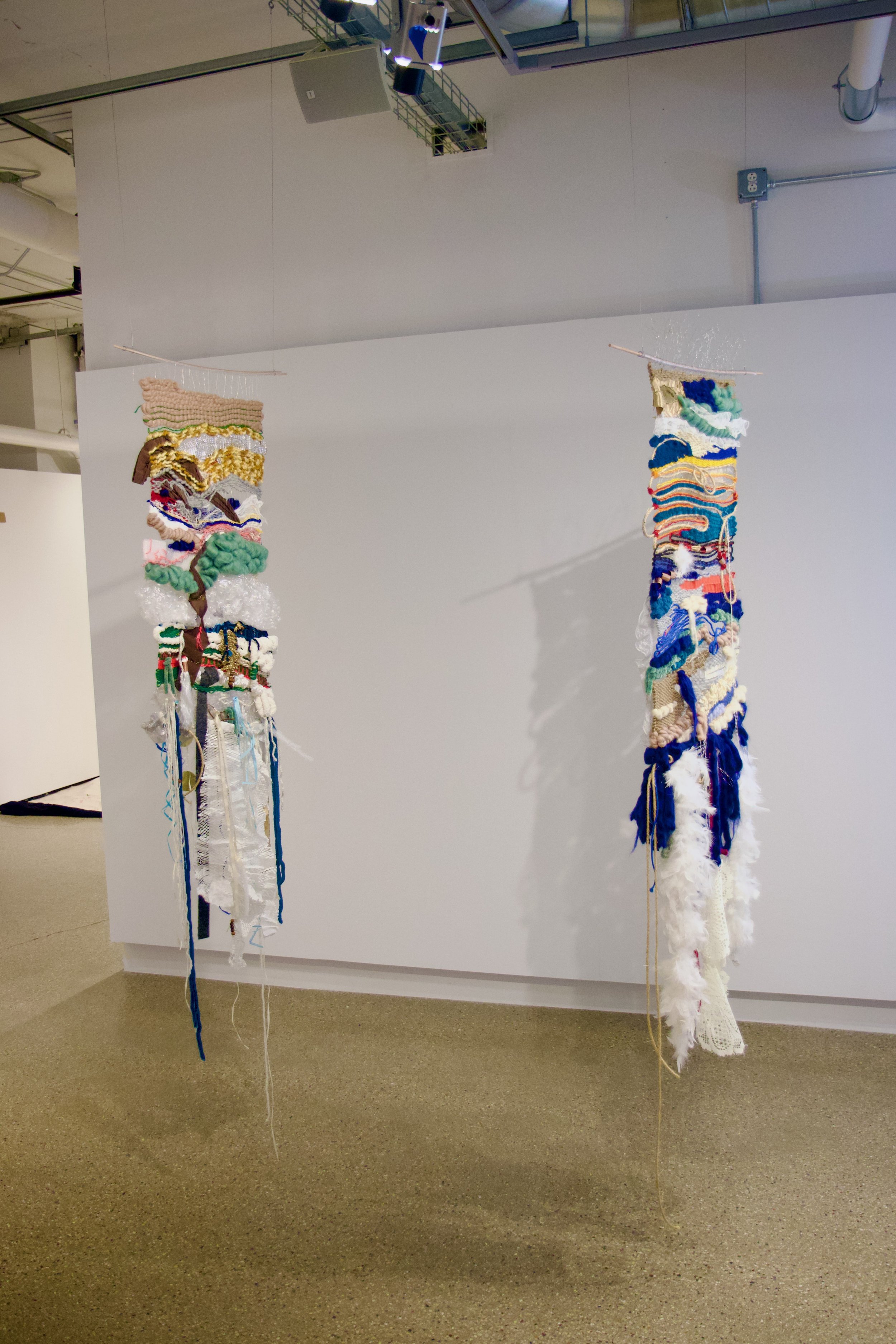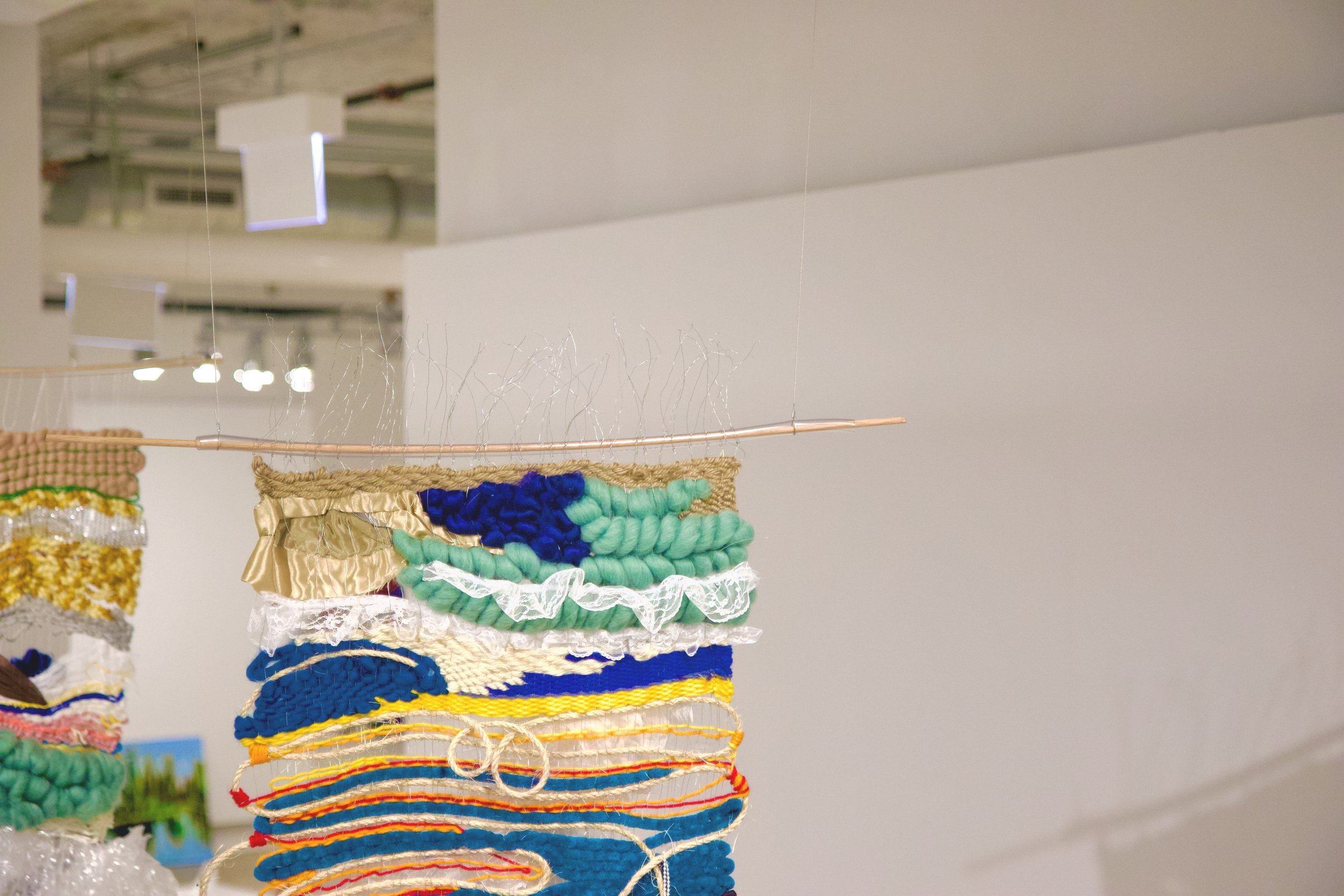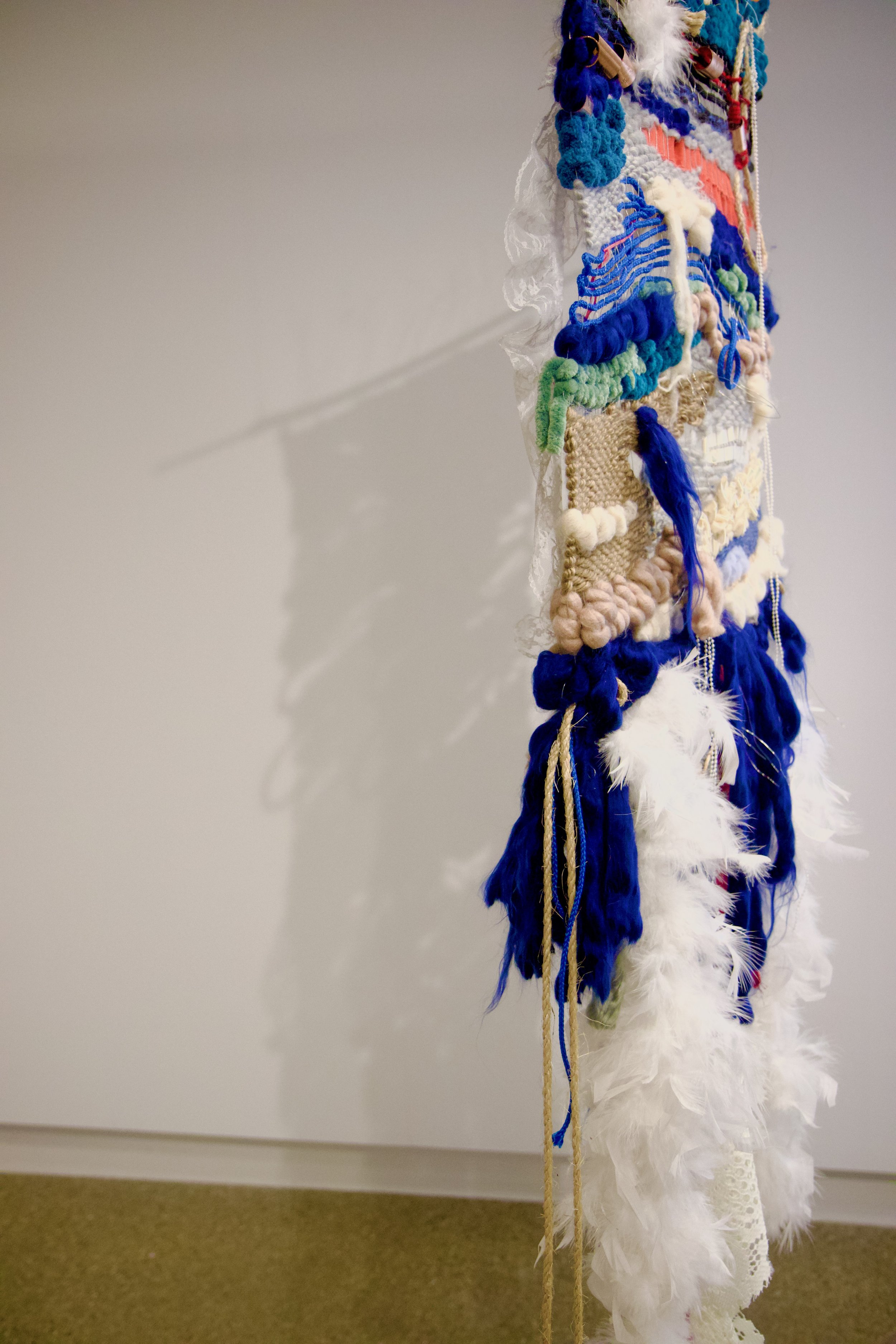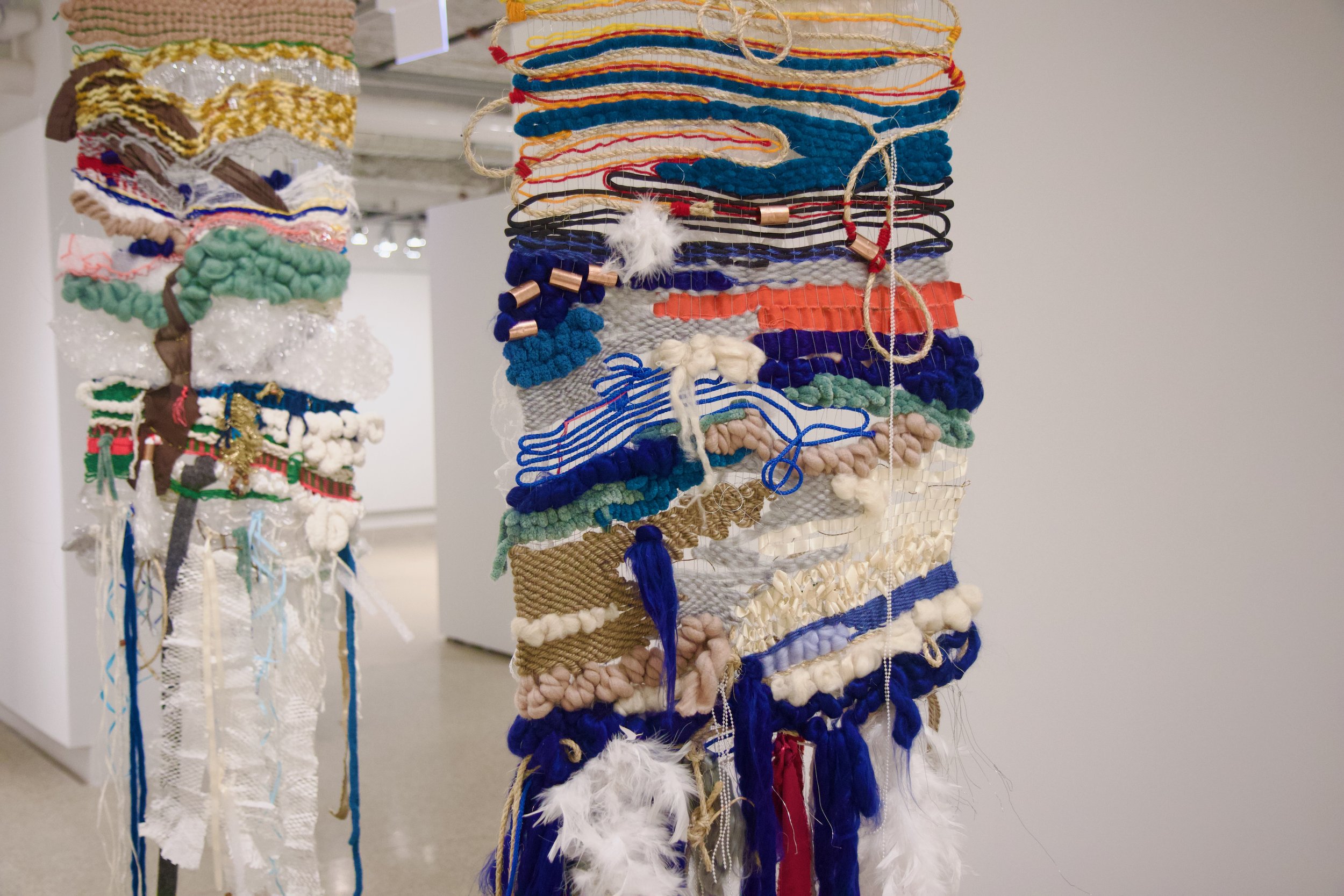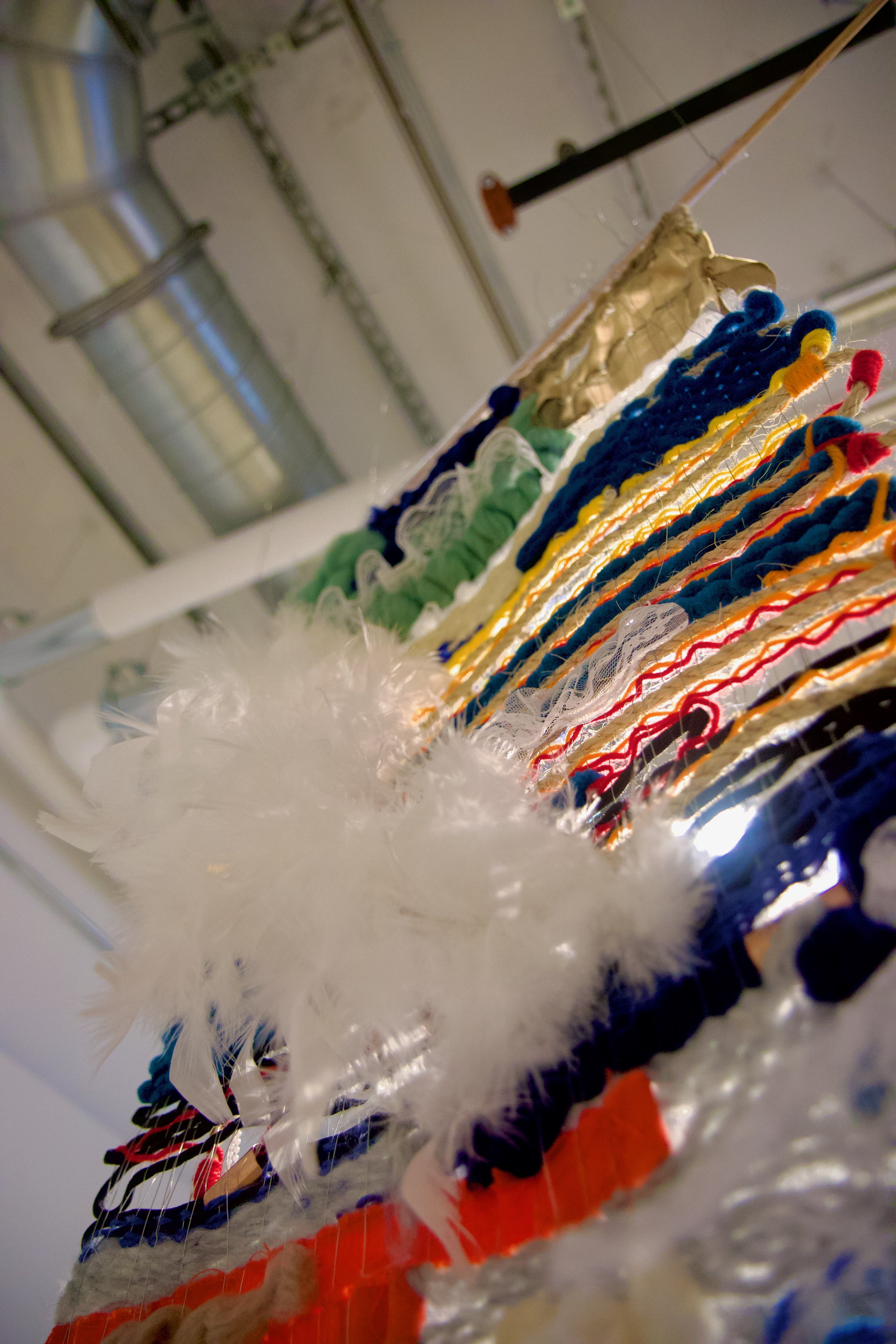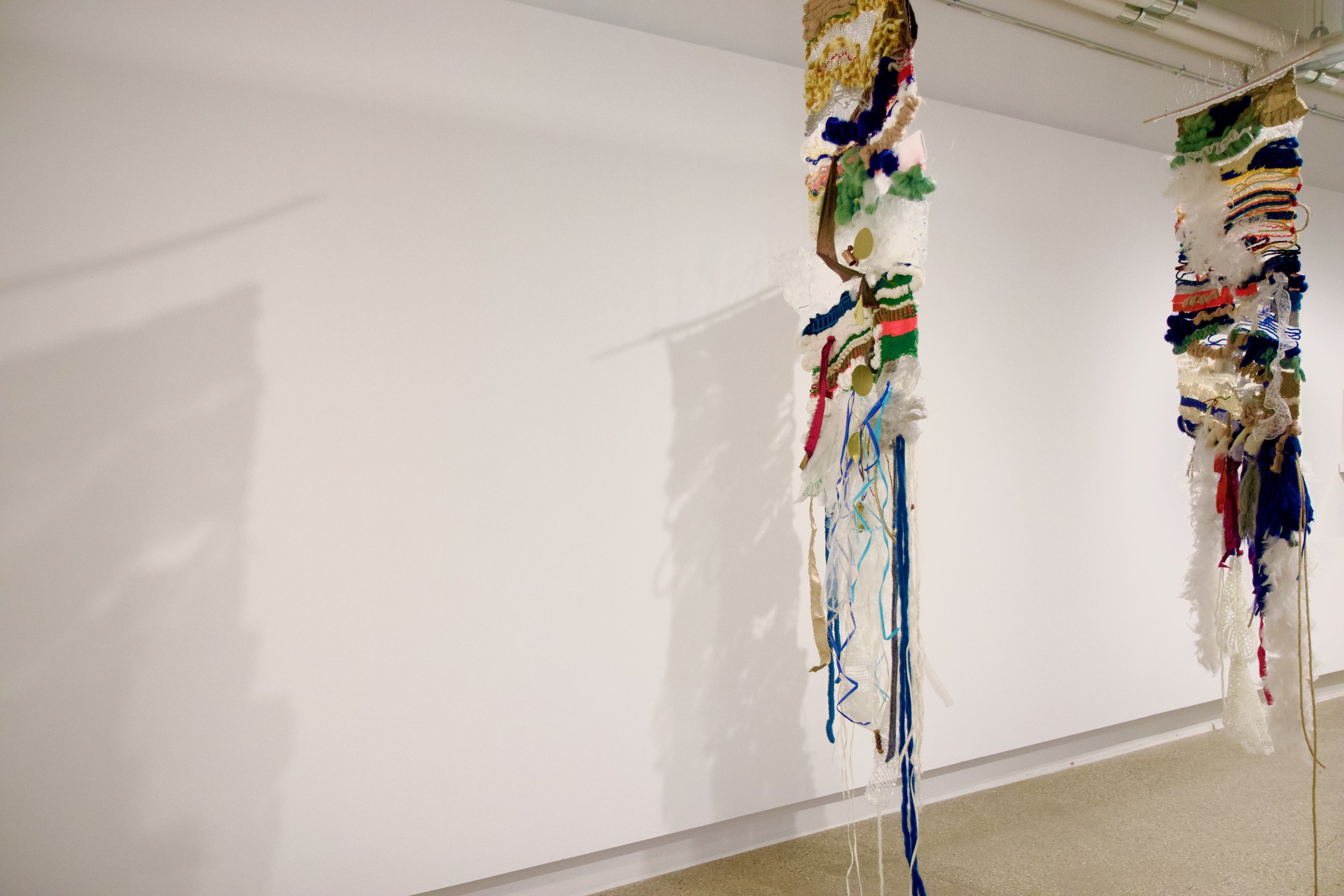Conversations in the Meeting Place: Using Weaving In Response Art To Make Sense Of Countertransference.
This graduate project utilizes art-based autoethnography to make sense of countertransference while working as an emerging art therapist in a community mental health setting. I use textiles and found objects to build tapestries as a form of response art. Informed by narrative art therapy and psychodynamic therapies, my questions investigate my position within and out of countertransference and my identities as they intersect to form my place in space. My interdisciplinary research pulls from fiber and material studies, sculpture and installation art, feminist theory, Jungian psychology, dialectical behavior therapy, identity theories, clinical neuroscience, somatic intervention, and media and material studies. I began by using weaving as a cathartic conduit for expressing my inner dialogue before and after working through difficult client interactions. This catharsis was actually a process of reframing and rewriting my past, present, and future narratives within the warp and weft. Autoethnographic research and writing arose in the process of art-making as I self-reflected through the concurrent use of journaling, mindful movements, and purposeful material choice. My reflections culminate in these diptych-weaving tapestries that hang off the wall and diagonal to each other at the SAIC (School of the Art Institute of Chicago) galleries in Chicago, Illinois. As a result of my art-based autoethnographic research in artmaking and installation, I demonstrate my deeper understanding of the therapeutic process, relationships, and spaces as an emerging art therapist. I learn that the process of self-discovery through countertransference is ongoing and doesn’t need to be all figured out to be a practicing art therapist and clinician. I pass these ongoing learnings on to future clinicians. This work is the labor of practicing in the field.
